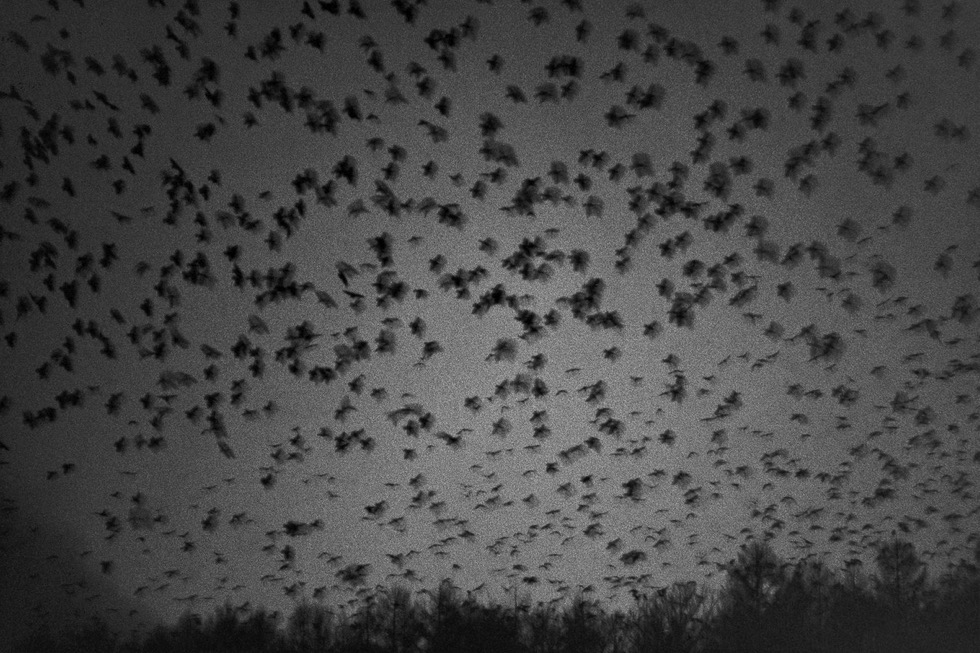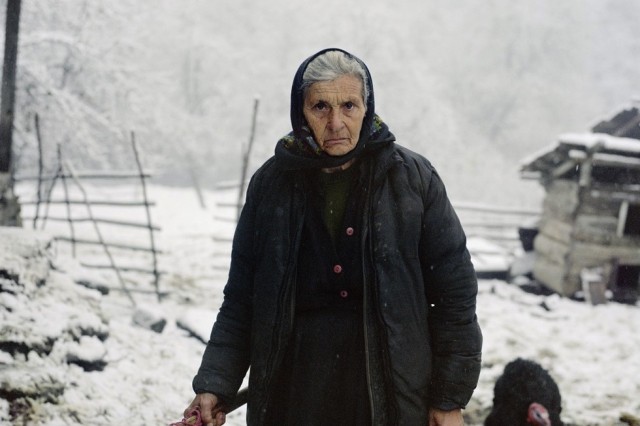“Torn between the recent past and the future…” Photo London — Reviewed

It’s a shock to see how far Photo London has come in the three short years it’s existed, says Jacob Charles Wilson: finding a welcome return of The Pavillion in Somerset House, alongside dynamic techniques, photo swaps, and sculptural installations…
As I wind my way through the corridors of Somerset House, London, I find it strange to think that Photo London is only in its third annual edition; it feels like it’s become a part of the stones themselves. Founding directors Fariba Farshad and Michael Benson talk of creating an hub for photographers, gallerists, and thinkers from across the globe. Their ambitious plans are not far off, with the enormous fair taking in nearly 90 galleries from 16 countries, showing hundreds of artists, and spreading out into nearly every room across four floors of Somerset House. It can be difficult finding your way around the building at the best of times, though compared to last year it’s a little easier; the show has been supervised by a curatorial panel headed by Philippe Garner.
2017 sees the return of the centrepiece of the fair, The Pavilion; set up in the stunning courtyard. Here is where you find established contemporary galleries: Alison Jacques is building on its hugely successful Robert Mapplethorpe show, and exhibiting work by Catherine Yaas; Victoria Miro focuses on the queer cinematic work of Isaac Julien; and Magnum Photos has its own booth stocked with work by their best artists. The Pavilion walls themselves have been turned over to commissions: William Klein presents a massive 18-metre mural of fashion shoots. His work can also be found in many more galleries throughout the fair. Korean artists Noh Suntag and Bae Bien-u have been commissioned for Dual Reality; Bae presents a selection of trees from their SONAMU series, while Noh’s prescient Red House dilutes the apparently stark differences between North and South Korea.
The rest of Somerset House hosts a mix of contemporary and historical works. In the East wing, Sprüth Magers shows a number of Hilla and Bernd Becher works, and a few stalls down, Parafin Gallery has abstract works by Nancy Holt. In the South Wing, it’s worth stopping by Ibasho and Flowers galleries for their works by Asako Narahashi and Michael Wolf, respectively. The fair highlights some very early photographic works from the mid-1800s, with these galleries concentrated in the West Wing: Roland Belgrave has a collection of photos of Egypt by Francis Frith, and Robert Hershkowitz shows a similar selection of early travel photography. The various genres represented, as well as the techniques – salt prints, photogravure, platinum print, etc. – show the Victorian history of photography was surprisingly dynamic.
The mezzanine floor of Somerset House has been dedicated to the Discovery section of the fair, for galleries founded fewer than five years ago, and curated for the first time by Tristan Lund. It may feel more out of the way, but but you’ll find upcoming and lesser-known artists. TJ Boulting has a small selection of works by Maisie Cousins and Juno Calypso, while Francesca Maffeo gallery is showing Laura Pannack (pictured, below), and Large Glass gallery have a number of Peter Fraser’s photos of Stockport in the 1980s. Below this, on the Embankment floor, Juergen Teller has taken over the entrance hall in his signature, effortless style. Next to this is a room dedicated to Taryn Simon; announced as the Photo London Master of Photography 2017, and well known for her work on the flowers used in diplomatic settings. Here, the focus is on her Image Atlas project, which collates terms and their related images from popular international search engines. The other side of the hall, Magnum Photo has a special 70th anniversary exhibition curated by Martin Parr, featuring the inspired photographic collection of David Hurn, who built it through swapping his own works with those of other photographers.

What do all these works say about where photography is going? It seems to be a little torn between the recent past and the future. Across the fair, there’s a lot of works dating from the ‘50s to the ‘70s; a lot of black and white prints, a lot of art and performance photography, a lot of photographic series. This sense of nostalgia culminates in the Brexit Wall in the Michael Hoppen Gallery, featuring a collection of artists, many of whom were exhibited in Strange and Familiar, which paints a fantasy picture of Britain now lost. But on the whole, there’s surprisingly little social documentary work. There’s also the reach into the future; just when you think you have photography worked out, it dissolves. Galerie Christophe Gaillard is showing sculptural installations by Rachel de Joode, and the dslcollection has commissioned Thresholds, a virtual reality work by Mat Collishaw, that recreates the pioneering 1839 photography exhibition by Henry Fox Talbot. Photography seems to be becoming more of an approach to making realism or tricking the senses than strictly capturing an image of a scene.
If you’re planning on buying any works there are a huge variety of sizes and prices; most galleries have at least one large work, but this year there are many more smaller pieces and larger editions, which make it much more suitable for collectors on a smaller budget – the cheapest work I’ve found so far is £120. Most galleries also have at least one book on sale, ranging from around £20 upwards. The dedicated photo publishers section is over in the East Wing, with some gems such as the long-awaited reissue of The Solitude of Ravens by Masahisa Fukase (pictured, top), alongside copies of Incoming by winner of the Prix Pictet 2017 Richard Mosse, both published by Mack. There are signed editions of many books for sale, and it’s always worth keeping an eye out for photographers around the fair.
In recent years, many art fairs have started their own talks programmes, Photo London builds on its strong reputation, framing these as conversations rather than lectures. Most of the big names are here: Jack Davison in conversation with Kathy Ryan, the director of photography for the New York Times Magazine; Martin Parr with David Hurn; William Klein with David Campany; Juergen Teller with Adrian Searle; Robin Muir and Philippe Garner with Diana Donovan, discussing the iconic fashion photographer Terence Donovan. An impressive line-up.
It’s a shock to see how far Photo London has come in the three short years it’s existed. But with its varied programme of events and vast array of works, the chance for collectors to find new and unknown artists, and its prime setting, it’s not surprising that it’s so quickly become foundational in the UK photography scene.
Jacob Charles Wilson
Jacob saw Photo London 18—21 May 2017; it returns 17—20 May 2018
Images, from top: MASAHISA FUKASE, Image from The Solitude of Ravens, 2017 (1984). The Solitude of Ravens, Photobook, Masahisa Fukase, 2017 (detail), courtesy MACK. LAURA PANNACK, If it weren’t for him I’d have eaten you roasted. Now however it is you who have eaten me, 2015 (detail). C Type Hand Print 76.2 x 76.2 cm





